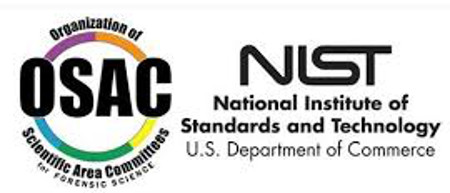NIST OSAC Appoints Two Microtrace Scientists
Skip Palenik and Chris Palenik of Microtrace were both appointed to a newly established committee designed to provide policy guidance to the U.S attorney general for the development of national standards in forensic science (Organization for Scientific Area Committees (OSAC)). Skip Palenik has been appointed to the Chemistry/Instrumental Analysis Scientific Area Committee’s (SAC’s) Geological Materials Subcommittee within the Organization of Scientific Area Committees (OSAC). Dr. Christopher Palenik has been appointed to the Chemistry/Instrumental Analysis Scientific Area Committee’s (SAC’s) Materials (Trace) Subcommittee within the Organization of Scientific Area Committees (OSAC). these
The National Institute of Standards and Technology (NIST) is working with the forensic science community to establish the new Organization for Scientific Area Committees (OSAC). OSAC will coordinate development of standards and guidelines for the forensic science community to improve quality and consistency of work in the forensic science community. This organization is bringing a uniform structure to what was previously an ad hoc system with the goal of improving the quality and consistency of forensic science in the United States.
“Creating this organization has been a true collaboration with the forensic science community to build the foundations for improving the practice of forensic science,” said Acting Under Secretary of Commerce for Standards and Technology and Acting NIST Director Willie May. “We are grateful for the contributions of the many individuals, professional associations and government agencies who have offered their time and expertise.”
The experts named today will serve on 23 subcommittees of the five Scientific Area Committees on Biology/DNA, Chemistry/Instrumental Analysis, Crime Scene/Death Investigation, Digitial/Multimedia and Physics/Pattern Interpretation. The five Scientific Area Committees reviewed more than 1,400 applications to choose the subcommittee members, with concurrence of the Forensic Science Standards Board, which serves as the OSAC governing board, and the U.S. Department of Justice.
OSAC Background
OSAC is providing a framework for long-term coordination across forensic science disciplines and is part of NIST’s commitment to support forensic science through an initiative launched in partnership with the Department of Justice (DOJ) in February 2013. As part of this effort, the DOJ established a new National Commission on Forensic Science in January 2014 to provide policy guidance to the U.S. Attorney General and help set priorities for standards development. NIST’s Acting Director May is the commission co-chair along with Deputy Attorney General James M. Cole, and NIST Fellow John Butler serves as a vice-chair with Deputy Assistant Administrator of the Drug Enforcement Agency’s Office of Forensic Science Nelson Santos.
As a non-regulatory agency of the U.S. Department of Commerce, NIST promotes U.S. innovation and industrial competitiveness by advancing measurement science, standards and technology in ways that enhance economic security and improve our quality of life. To learn more about NIST, visit www.nist.gov. To learn more about NIST’s efforts on forensic science, visit www.nist.gov/forensics.
Microtrace Background
Microtrace is an independent laboratory specializing in the characterization and identification of single, small particles and unknown materials using a combination of modern and traditional microscopical and microchemical techniques. Microtrace provides solutions to problems outside or beyond the scope of typical forensic and industrial laboratories. Our expertise in analytical microscopy and microchemistry has earned us an international reputation and we have been involved in cases ranging from the Green River Murders to the Jon Benet Ramsey investigation. Clients from industry, the law and the United States and foreign governments have put their trust in both our skill and discretion to handle their most delicate projects.
How May We Help You?
Contact usto discuss your project in more detail.








